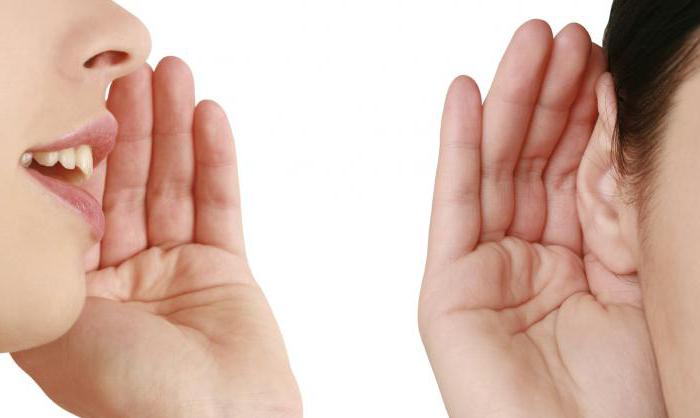Modern society cannot function normally without the interaction of people with each other. Each person is individual, but, of course, it is believed that under different situations, she should adapt. This allows a person to find a job, a partner, to travel. The manner of communication and human behavior is formed throughout his life. They can change, supplemented by other techniques, and any one kind may be lost. Factors and reasons are very different. The goal is one: to achieve a result. Through communication, a person is able to achieve a lot, you just need to choose the right style of communication and behavior.
Communication styles
The communication style is characterized by the usual stable connection between the ways and methods of communication and the goals it pursues. That is, these are some features of the interaction between people. A man is looking for a new job, he came for an interview - here he uses one style of communication, when interacting with colleagues - another, in the family and in communication with relatives - the third. Different styles of communication are chosen for each specific situation. Whatever action is taken, the words of a person will always be the basis of communication.
Psychological styles of communication
Psychology has always dealt with the problems of people interacting with each other. According to psychologists, the style of communication is determined by the person’s ability to choose certain means of behavior in a particular situation. They divided communication styles into three categories:
- flexible;
- rigid;
- transition.
With a flexible style, a person is well oriented in society, he can adequately assess who is in front of him, quickly understand what is at stake and even guess about the emotional state of the interlocutor. With a rigid style, a person can not quickly analyze not only his behavior, but also the behavior of the interlocutor. He has poor self-control and cannot always choose the appropriate way of behavior and communication. With a transitional style, a person has signs from the two above styles. He does not fully understand what is happening around him, with whom he communicates, and which way of interaction is better to choose.
Learning Communication Styles
When learning communication techniques, you need to know that the communication style in itself and the communication style in any situation are different concepts. If you do not take into account the characteristics of the person’s character and the characteristic of the situation in which he finds himself, then the explanation will be simply meaningless. There are a large number of methods for studying communication styles. For example, A.V. Petrovsky created a system of pedagogical interaction, consisting of two components. She was called the style of pedagogical communication.
In 1938, attention was first paid to communication styles. The German psychologist Kurt Levine conducted a study and deduced a classification of the relationship between people who control and people who are forced to obey. Subsequently, it became generally accepted and is still valid. His pedagogical communication styles include:
- authoritarian;
- democratic;
- liberal.
Characteristics of pedagogical communication styles
Styles of pedagogical communication were defined as the emotional techniques and actions of the teacher in relation to the student. The teacher’s behavior is determined by his understanding of the goal he is pursuing in teaching the child. Most often, this is nothing more than teaching a child the basics of his subject, transferring the skills that a student will need to complete a task, or that will be useful to him in later life. In this case, the teacher also takes into account the child's communication styles.With children, communication does not occur at all, as with adults. The teacher needs a little more time, effort and attention to explain the material to the child. Communication itself takes place through instructions, explanations, questions, comments and even prohibitions.
Authoritarian style of communication
An authoritarian style of communication implies that the teacher reserves the right to resolve issues independently. They can relate to relationships between students, activity in the classroom, or relate to each student in person. As a rule, such a regime includes both dictatorship and concern for subordinates. With such teachers, students are rarely able to open up fully and show their abilities. The initiative can cause a conflict between the teacher and the student. The teacher’s conviction that only his thinking is correct, and all the rest is false, does not allow both sides to interact productively. The child’s response cannot be adequately assessed because the teacher simply does not understand the student and is based only on performance indicators. His bad deeds in the eyes of the teacher necessarily come to the forefront, while the motives of his behavior are not taken into account.
Democratic style of communication
A democratic style of communication is considered the best, because the teacher seeks to help the student, use all his strength and capabilities, activate the role of the child in the life of the class. Interaction and cooperation are the main goals of this style. The teacher evaluates, first of all, the student’s good deeds, treats him well, understands him and supports him. If the teacher sees that the child does not have time to absorb information or does not understand something, then he will certainly slow down the pace and explain the material more thoroughly, put everything on the shelves. The teacher adequately assesses the capabilities of the ward and can predict the direction of his development. He takes into account the interests and wishes of his students. Some methods of teaching and communicating with students of a democratic-style teacher are slightly inferior to the methods of the authoritarian style of their colleagues, but the former have a better climate in the classroom. Children feel much freer.
Liberal communication style
The methods of teaching a teacher of a liberal style differ from the methods included in other styles of communication of a teacher. He seeks to reduce all chances to take any part in the life of the class, does not want to bear responsibility for students. The teacher is limited to performing exclusively his pedagogical functions. The teacher’s communication styles that he combines in his work entail poor academic performance. He is indifferent to the problems of both school and children, as a result of which it is very difficult for him to control students.

Characteristics of business communication styles
Styles of business communication mean any actions or methods of communication aimed at achieving any result. At the same time, the main task of those participating in the conversation is to reinforce the idea of themselves as a member of the team or society as a whole. The participant, as it were, puts on his holiday mask and for some time becomes a different person. This peculiar ritual, on the one hand, sometimes seems pointless and boring, and on the other, it is a game, the rules of which a person knows in advance and must follow them.
Ritual style of communication
Styles of business communication like ritual are often used in companies whose members have long known each other. And so they meet, spend some time together, and it seems that after these years the topics discussed in these companies have not changed at all. Sometimes you can even predict what a particular participant in the conversation will say, but, nevertheless, everyone is happy with everything and after a day, some even feel satisfaction from the time taken.Such a communication style is considered a typical case of a ritual style, where the quality of communication comes to the fore, and not its content. Thus, the very reinforcement of the idea of oneself as a member of the team occurs, where everyone takes a place, everyone is important. His opinions, values, worldview are important.
Cases when a person who answers the question “How are you?” Always answers unequivocally: “Normally,” and now suddenly begins to tell a detailed story about his life, family, children and work, they are called going beyond the ritual. Such atypical human behavior, whose reaction could always be guessed, violates the idea of the ritual, because the main thing is to wear a mask, whether it be social relations or interpersonal ones.
Manipulative communication style
With this style of communication, a person is perceived by others as a means to an end. As a rule, the interlocutor tries to show the best sides of his goal, so that he helps to achieve it. Despite the fact that both participants in the conversation have different ideas about the component of this goal, the one who is more skilled in manipulating methods will win. In such cases, the interlocutor knows about the reasons for the partner’s behavior, about his aspirations, desires and can turn the course of events in the direction he needs. Manipulation is not necessarily a bad method. Many goals are achieved in this way. Sometimes, in order to convince a person to do something, to make him act, it is necessary to resort to a manipulative style of communication.
This can be compared with the method of communication of the middle manager. He speaks with his superiors in one tone, but with his subordinates in a completely different tone. Sometimes it’s unpleasant, but it’s impossible in another way.
There are cases when the whole communication style of a person comes down to manipulation. Due to the too frequent use of this method on a person, his constant persuasion and pushing, the latter may consider manipulation to be the only correct way out of the situation.
Humanistic style of communication
The humanistic style of communication is about interpersonal relationships in which a person wants to be understood, supported, given advice to empathize with. Initially, this type of communication does not imply any purpose; the situation is made up of current events. This style of communication can be called the most sincere of all existing, where those same events are intimate, confessional. The main method that works here is suggestion, and mutual. Each partner inspires the other that he is worthy of trust, that one is ready to listen, and the other is to tell what worries him.
Such communication can occur not only between loved ones and relatives. For example, a person in a few tens of minutes can recognize an interlocutor who rides with him on a bus in the next seat or tell him a lot about himself, but does not know the person with whom he has been working for several years. A conversation with a fellow traveler leads to some revelations about yourself, makes people feel each other, empathize. But talking with a colleague has completely different goals.








